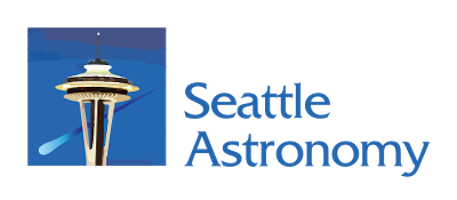I am an optimist by nature, but this sunny disposition is often greatly challenged by one of my chosen hobbies in amateur astronomy. There's a lot that can happen to foil your best laid plans for a night of observing, especially when you live in a major urban center with a marine climate that is hell-bent on throwing clouds your way about 98 percent of the time.
Perhaps that last statement wasn't entirely optimistic. Yet I enjoyed a couple of clear nights of observing on Monday and Tuesday this week, and with a good weather forecast for Wednesday I set out to improve my views of Mars for that evening's session.
This involved a trek out to Ballard for a visit to Cloud Break Optics, where proprietor Stephanie Anderson was able to set me up with a set of planetary filters that could well improve my observations of Mars.
 |
| My new set of planetary filters. |
I have not been much of a filter user in my astronomical observations. Up until this week I only owned one filter, a 13-percent Moon filter that tones down the light reflected by Luna. Without it, viewing the Moon through a telescope can be downright uncomfortable. Still, I'm always willing to try new things, and Stephanie set me up with a
Mars Observing Kit made by Celestron. The kit included four filters: an #80A blue filter that can enhance views of surface features and polar ice caps; a #56 green filter that improves contrast for polar caps, low clouds, and dust storms; a #25 red filter can darken the seas on Mars while lightening its orange deserts; and a special Mars filter that combines the features of the red and blue filters. It also included a Barlow lens that doubles the magnification of any eyepiece you use in observing. I already had one of those, but will soon hold a competition to find out which is better.
The weather held as predicted on Wednesday, though as I made my way home from Cloud Break Optics I noticed some ominous clouds off to the west and, in another example of shaken optimism, immediately recalled the old adage that buying new astronomy gear means bad weather for weeks. It's sort of like rain being caused by washing your car. I am occasionally chided for passing along "weather superstitions" (most recently when I blamed my putting up the lights on our deck umbrella for causing rain). Some say they're not useful or helpful. Nevertheless, I think they're true.
I gave my new filters a test and could tell right away they worked. The glare of a super-bright Mars was greatly reduced, making more detail visible. It was a little strange looking at green, hot pink, blue, or purple Mars after years of seeing the unfiltered orange/red version, but I'll get used to that soon enough. The bad news was that while the details of Mars became a bit more prominent, it was difficult to really make them out because even though the sky was clear the viewing conditions were atrocious. The seeing, though not as poor as it was Monday, wasn't great. The transparency was truly awful because of high moisture in the atmosphere. So while I could see a bit more detail on Mars, I had a decidedly muddy view of what the details actually might be. The moisture was bad enough that pretty early on in my viewing session my optics, including my new filters, collected a heavy layer of dew that brought my work for the night to an end.
I remain undaunted. As I write this in the early afternoon on Friday, the sky is mostly clear, with a little haze off to the west. As an optimist, my telescope is still by the back door, not down in the corner of the basement where it sits for months waiting for the clouds to clear. I'm planning another shot at Mars for tonight.






